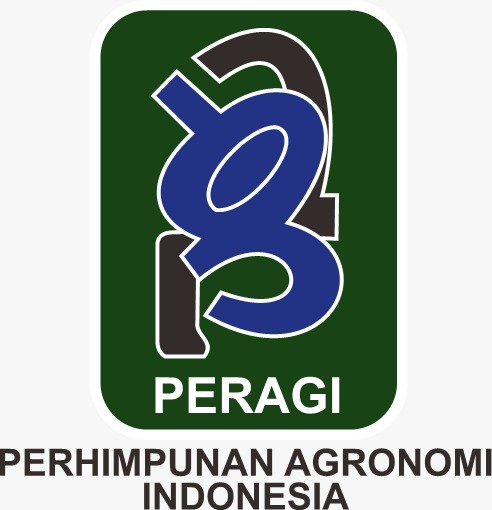The Effect of Cow Dung Manure Fertilizer on The Growth and Production of Cayenne pepper (Capsicum annuum var. cayenne)
Abstract
Cayenne pepper is a shrub that grows to a height of approximately 50–135 cm. This plant has an upright growth habit. Cayenne pepper has a primary taproot with lateral roots. Manure is decomposed animal waste, primarily from livestock, that is applied to agricultural land to enhance soil fertility and structure. The nutrient content of manure depends on its source material. This study aims to determine the effect of cow dung fertilizer on the growth and yield of cayenne pepper (Capsicum annuum var. cayenne). This study employs an experimental approach using a Completely Randomized Design (CRD). The collected data were statistically analyzed using the Kruskal-Wallis test. The results showed that cow dung fertilizer had a significant effect on plant height, number of fruits per plant, and fruit weight. However, the number of leaves showed significant differences among treatments, indicating that cow dung fertilizer influenced plant height, number of fruits, and fruit weight but had no effect on leaf count. The P4 treatment (150 g/polybag) was the most effective in promoting cayenne pepper growth.
Downloads
References
Alif, S. M. (2017). Kiat sukses budidaya cabai rawit. Bio Genesis.
Arifah, S. M. (2013). Aplikasi macam dan dosis pupuk kandang pada tanaman kentang. Jurnal Gamma, 8(2).
Christy, J., Sinaga, R., & Gultom, D. M. T. (2023). Respon pertumbuhan bibit tanaman cabai rawit (Capsicum frutescens) dengan aplikasi vitamin B1. Jurnal Agroteknosains, 7(2), 192–204.
Hartatik, W., & Widowati, L. R. (2006). Pupuk kandang. Pupuk Organik dan Pupuk Hayati, 1, 56–82.
Jannah, N., Patah, A., & Muhtar, M. (2012). Pengaruh pemberian beberapa jenis pupuk kandang dan nutrisi Saputra terhadap pertumbuhan dan hasil tomat (Lycopersicum esculentum Mill.) varietas Permata. Ziraa’ah Majalah Ilmiah Pertanian, 35(3), 169–176.
Musnamar, E. I. (2009). Pembuatan dan aplikasi pupuk organik padat (Seri Agro Tekno). Penebar Swadaya.
Pangaribuan, D. H., Ginting, Y. C., Arif, S., Niswati, A., Dermiyati, D., Utari, E., Wulandini, F., & Aprilyani, Y. I. (2022). Pengaruh campuran ekstrak fermentasi pupuk kandang sapi sebagai substitusi nutrisi AB Mix pada tanaman pakcoy dengan sistem hidroponik. Agro Bali: Agricultural Journal, 5(1), 187–198.
Paulus, A. P., & Ellen, G. T. (2016). Faktor-faktor yang mempengaruhi harga cabai rawit di Kota Manado. Agri-Sosioekonomi, 12(2), 105–120.
Prasetya, M. E. (2014). Pengaruh pupuk NPK mutiara dan pupuk kandang sapi terhadap pertumbuhan dan hasil tanaman cabai merah keriting varietas Arimbi (Capsicum annuum L.). Agrifor, 13(2), 191–198.
Prasetyo, T. P., Subagiono, S., & Hasnelly, H. (2024). Produktivitas tanaman cabai rawit (Capsicum annuum var. cayenne) dalam pola tumpangsari cabai dan jenis legum. Jurnal Sains Agro, 9(2), 117–126.
Ramadani, A. A., Jannah, N., & Sutejo, H. (2024). Respon pertumbuhan dan hasil tanaman lobak putih (Raphanus sativus L.) varietas Ming Ho terhadap pemberian pupuk Green Tonik dan Trichokompos. JAKT: Jurnal Agroteknologi dan Kehutanan Tropika, 2(2), 205–214.
Roidah, I. S. (2013). Manfaat penggunaan pupuk organik untuk kesuburan tanah. Jurnal Bonorowo, 1(1), 30–43.
Sentana, S. (2010). Pupuk organik, peluang dan kendalanya.
Suwahyono, U. (2011). Petunjuk praktis penggunaan pupuk organik secara efektif & efisien. Penebar Swadaya Grup.
Zamrodah, Y., & Pintakami, L. B. (2020). Pendapatan dan kelayakan usahatani cabai rawit. Journal of Agricultural Socio-Economics (JASE), 1(1), 41–46.
Copyright (c) 2025 Sudirman, Dini Hariyati Adam, Khairul Rizal

This work is licensed under a Creative Commons Attribution 4.0 International License.
Authors who publish with Jurnal Agronomi Tanaman Tropika (JUATIKA) agree to the following terms:
Authors retain copyright and grant the Jurnal Agronomi Tanaman Tropika (JUATIKA) right of first publication with the work simultaneously licensed under a Creative Commons Attribution License (CC BY 4.0) that allows others to share (copy and redistribute the material in any medium or format) and adapt (remix, transform, and build upon the material for any purpose, even commercially) with an acknowledgment of the work's authorship and initial publication in Jurnal Agronomi Tanaman Tropika (JUATIKA).
Authors are able to enter into separate, additional contractual arrangements for the non-exclusive distribution of the journal's published version of the work (e.g., post it to an institutional repository or publish it in a book), with an acknowledgment of its initial publication in Jurnal Agronomi Tanaman Tropika (JUATIKA). Authors are permitted and encouraged to post their work online (e.g., in institutional repositories or on their website) prior to and during the submission process, as it can lead to productive exchanges, as well as earlier and greater citation of published work.







 More Information
More Information



